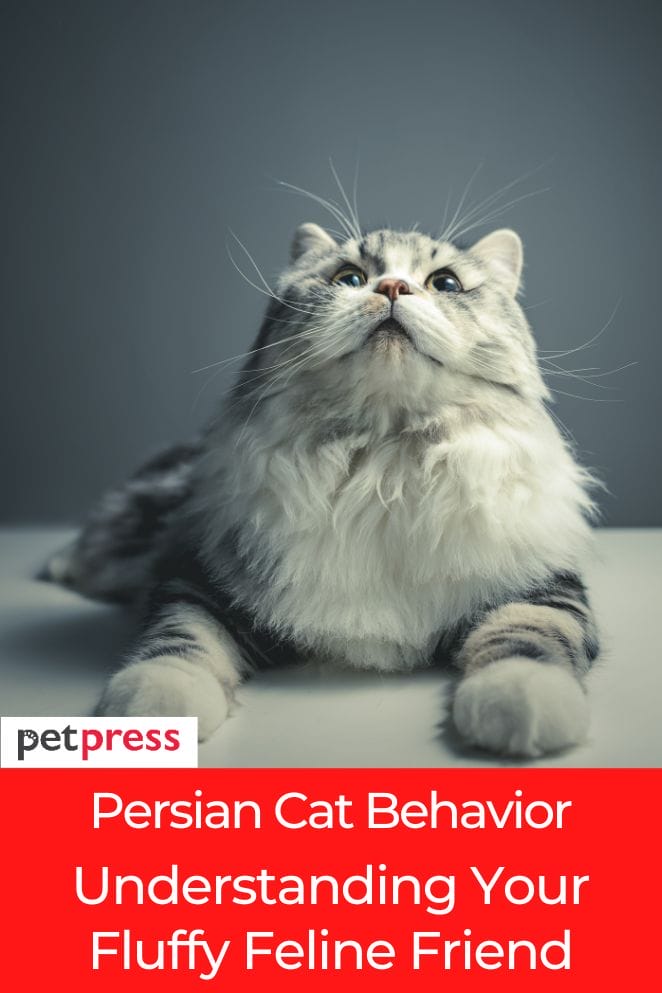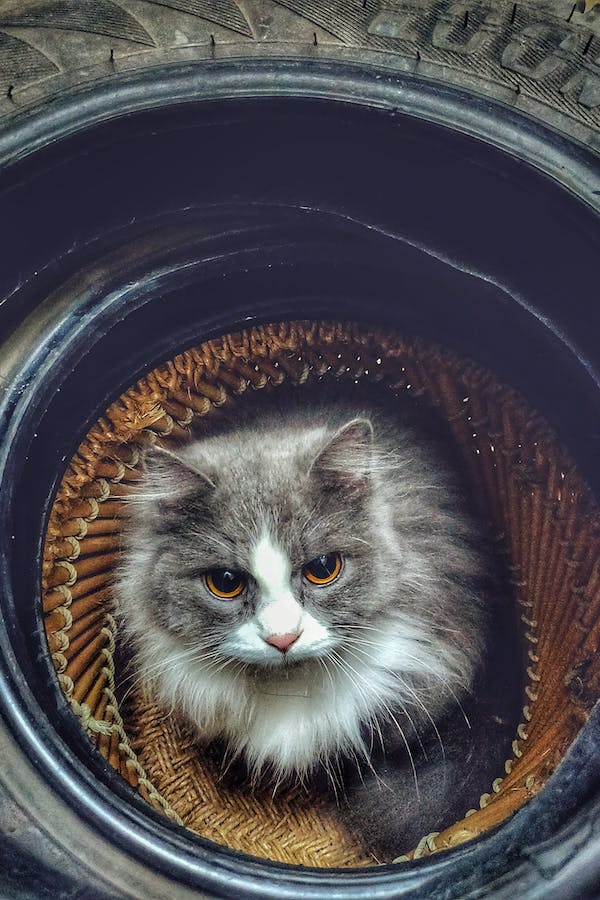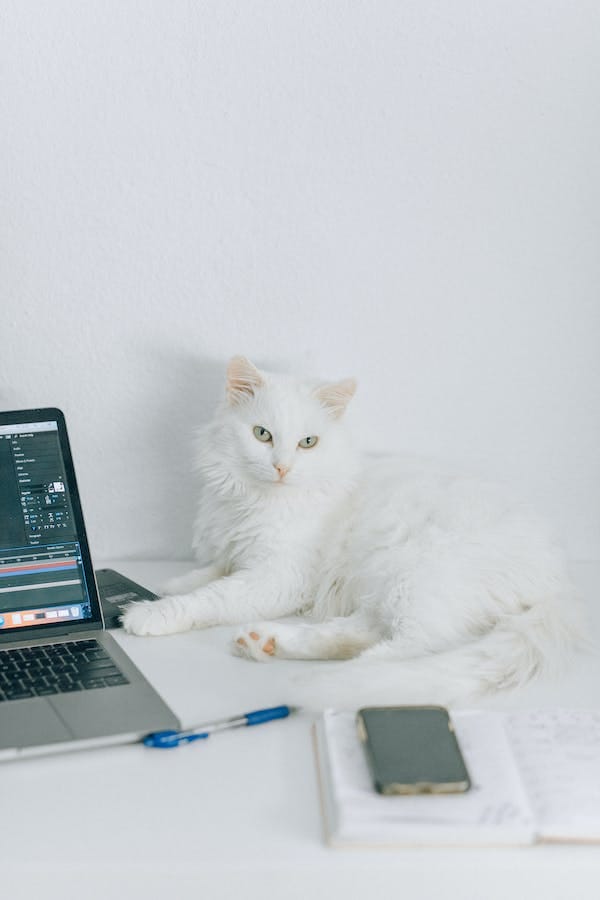
Hey there, fellow cat enthusiasts! If you’ve ever been lucky enough to share your home with a Persian cat, you know they’re a breed like no other.
In this comprehensive blog post, we’re going to explore the intriguing realm of Persian cat behavior.
From their distinctive physical appearance to their charming quirks, common behaviors, and even some tips on cohabiting harmoniously with these fluffy divas.
So, grab a cup of tea, curl up, and let’s embark on a delightful journey into the world of Persian cats!
Persian Cat Physical Appearance
Persian cats are truly a sight to behold, and their physical appearance is nothing short of breathtaking.
These felines exude an air of regal elegance with their distinct characteristics.
Let’s delve into the finer details of their captivating appearance.
- Coat and fur: The most defining feature of a Persian cat is its exquisite, long, and luxurious fur. This fur is incredibly soft to the touch, making you want to run your fingers through it endlessly.
- Facial structure: The Persian cat’s face is perhaps its most iconic feature. It’s unmistakably flat, with a round shape that almost appears to be perfectly symmetrical.
- Eyes: Their eyes are large and expressive, set wide apart, and come in a spectrum of colors, from deep, soulful blues to vivid greens and everything in between.
- Ears: Peeking out from beneath their lush fur, you’ll find their small, rounded ears. They have tufts of fur on the tips, adding to their endearing appearance.
- Body: Underneath all that fur, you’ll discover a compact, medium-sized body with sturdy legs. Their tails are typically short and bushy, in perfect proportion to the rest of their physique.

Common Behaviors of Persian Cats
Persian cats are indeed a unique breed with some distinctive behaviors that set them apart.
Let’s delve into these behaviors in more detail, offering a deeper understanding of what it’s like to have one of these feline companions in your home.
Gentle and affectionate
Persian cats are often described as the “lap cats” of the feline world.
They have an innate ability to exude a sense of calm and affection that’s truly heartwarming.
These cats form strong bonds with their owners and are known for their tendency to seek out human companionship.
They will curl up on your lap, often for hours at a time, as if they were custom-made to provide warmth and comfort.
Their gentle and loving disposition makes them ideal for those seeking a cat that is not only beautiful but also a true friend.
Low energy
While some cats are known for their high energy levels and playful antics, Persian cats take a more leisurely approach to life.
They prefer a life of tranquility and relaxation.
You won’t find them chasing after toys or engaging in vigorous play sessions.
Instead, they choose to lounge gracefully on your favorite piece of furniture, adding an air of regal elegance to your home.
Low-pitched meows
Unlike some more vocal cat breeds, Persian cats have a charming habit of producing soft, low-pitched meows.
It’s as if they’re whispering sweet nothings to you.
These gentle vocalizations are a testament to their gentle nature.
When they do communicate, it’s usually to seek your attention, express their desires, or simply share a quiet moment with you.
It’s a far cry from the loud, demanding meows of some other breeds.
Grooming rituals
Persian cats require regular grooming due to their long, luxurious fur.
They often engage in their own grooming rituals, meticulously licking and cleaning themselves.
However, it’s essential for owners to assist with grooming to prevent matting and maintain their coats’ pristine condition.
This shared grooming experience can be a bonding time between you and your feline friend.
Trilling when happy
One of the charming quirks of Persian cats is their tendency to make a trilling sound when they’re in a joyful or excited mood.
This unique vocalization is like music to the ears of cat enthusiasts.
It’s a soft, melodic sound that’s quite distinct from the usual meows or purrs.
When your Persian cat makes this trilling noise, it’s their way of expressing contentment and happiness, almost like a special secret language shared between the two of you.
Sleeping habits
Persian cats are, without a doubt, some of the sleepiest members of the feline family.
They have a remarkable ability to nap and snooze for extended periods.
In fact, they can easily sleep for up to 18 hours a day.
This penchant for rest and relaxation is part of what contributes to their calm and laid-back demeanor.
It’s not uncommon to find them gracefully draped over a couch or nestled on a soft blanket, peacefully dozing the day away.
Following their owners
Persian cats are not just content with sleeping, they also have a penchant for following their owners around.
They genuinely enjoy being close to their humans, making them exceptional companions.
Whether you’re going about your daily chores or simply moving from one room to another, you can often expect your Persian cat to be right there with you.
Watching and observing
In addition to following their owners, Persian cats are keen observers.
They have a curious and watchful nature.
You’ll often find them perched on a windowsill, gazing out at the world or quietly observing the activities in the household.
This watchful behavior is not just about curiosity; it’s also a way for them to stay engaged with their surroundings and maintain a sense of connection to their environment.

Common Behavior Issues for Persian Cats
Owning a Persian cat is a delightful experience, but it’s important to be aware of potential behavior issues that can arise, along with some ways to address them.
Let’s take a closer look at these common concerns and how to handle them.
Grooming challenges
Persian cats are famous for their magnificent, long fur, but this beauty comes with a responsibility – grooming.
Their luxurious coat requires regular attention to prevent matting and maintain its pristine condition.
If left unattended, their fur can become tangled and uncomfortable for the cat.
Brushing your Persian cat daily is a must, and occasional baths might be necessary to keep them looking and feeling their best.
Respiratory issues
One unique trait of Persian cats is their flat faces, often referred to as brachycephalic features.
These facial characteristics can make them prone to respiratory issues, particularly in hot or humid conditions.
It’s crucial to ensure good ventilation in your home, especially during the warmer months.
Additionally, be mindful of any signs of labored breathing or discomfort in your cat.
If you notice these symptoms, it’s essential to seek prompt veterinary care to address any potential respiratory problems.
Timid nature
While Persian cats are generally known for their gentle and affectionate nature, some individuals may exhibit a timid disposition.
This timidity can manifest as shyness or nervousness, especially in new or unfamiliar situations.
It’s essential to be patient and understanding with your Persian cat.
Create a safe and quiet space in your home where they can retreat to when they need some alone time.
Gradually introduce them to new experiences and people to help build their confidence.
Nutritional considerations
Another common concern for Persian cats is their dietary needs.
Their flat faces can make it a bit challenging for them to eat from standard cat bowls, so using shallow or specially designed dishes can be helpful.
Additionally, be mindful of their weight, as excessive weight gain can exacerbate respiratory issues.
Consult your veterinarian for guidance on a suitable diet and feeding regimen to keep your Persian cat healthy.
Tips to Live with Persian Cats

Living with a Persian cat can be a wonderfully rewarding experience, but it comes with some specific considerations.
Here are some tips to help you and your Persian cat enjoy a harmonious life together, each filled with comfort and contentment.
Grooming routine
Establishing a regular grooming routine is absolutely crucial for Persian cats.
Their stunning, long fur can easily become tangled and matted if not properly cared for.
Think of it as maintaining a priceless work of art.
Brush your Persian cat daily to keep their coat smooth and tangle-free.
Pay special attention to their underbelly and behind the ears, as these areas are prone to matting.
Occasional baths may also be necessary to maintain their pristine appearance.
Clean air and ventilation
Persian cats, with their flat faces and brachycephalic features, can be more sensitive to respiratory issues, particularly in warmer weather.
It’s essential to ensure good ventilation in your home to provide them with a breath of fresh air.
Avoid exposing them to excessive heat, and keep an eye on their breathing, especially on hot days.
Providing a comfortable and well-ventilated environment can help prevent potential respiratory problems.
Patience and affection
Persian cats thrive on love and care, and one of the most valuable tips for living with them is to be patient and shower them with affection.
These cats are known for their gentle and affectionate nature.
Take the time to bond with your Persian cat, petting them, cuddling, and engaging in play sessions.
Create a loving and secure environment where they feel safe and cherished.
Proper Nutrition
Due to their unique facial structure, Persian cats may have specific dietary needs.
Make sure to choose shallow or specially designed food and water dishes that are comfortable for them to eat from.
Monitor their weight to prevent excessive gain, which can worsen respiratory issues.
Consult your veterinarian for guidance on the right diet and feeding schedule to keep them healthy and at an ideal weight.
Regular vet check-ups
Schedule regular veterinary check-ups to monitor your Persian cat’s overall health.
These visits allow early detection of any potential health concerns, including respiratory issues, dental problems, and more.
Regular vaccinations, parasite control, and dental care are also vital aspects of maintaining their well-being.
Conclusion
In essence, Persian cats are a breed known for their regal elegance and affectionate nature.
They can bring immense joy to your life, but it’s important to understand their unique behaviors and needs.
This includes regular grooming to maintain their luxurious coat, ensuring good ventilation for their respiratory health, and being patient and affectionate as they thrive on love and care.
By addressing these aspects, you can enjoy a harmonious and loving relationship with these captivating feline companions.


GIPHY App Key not set. Please check settings